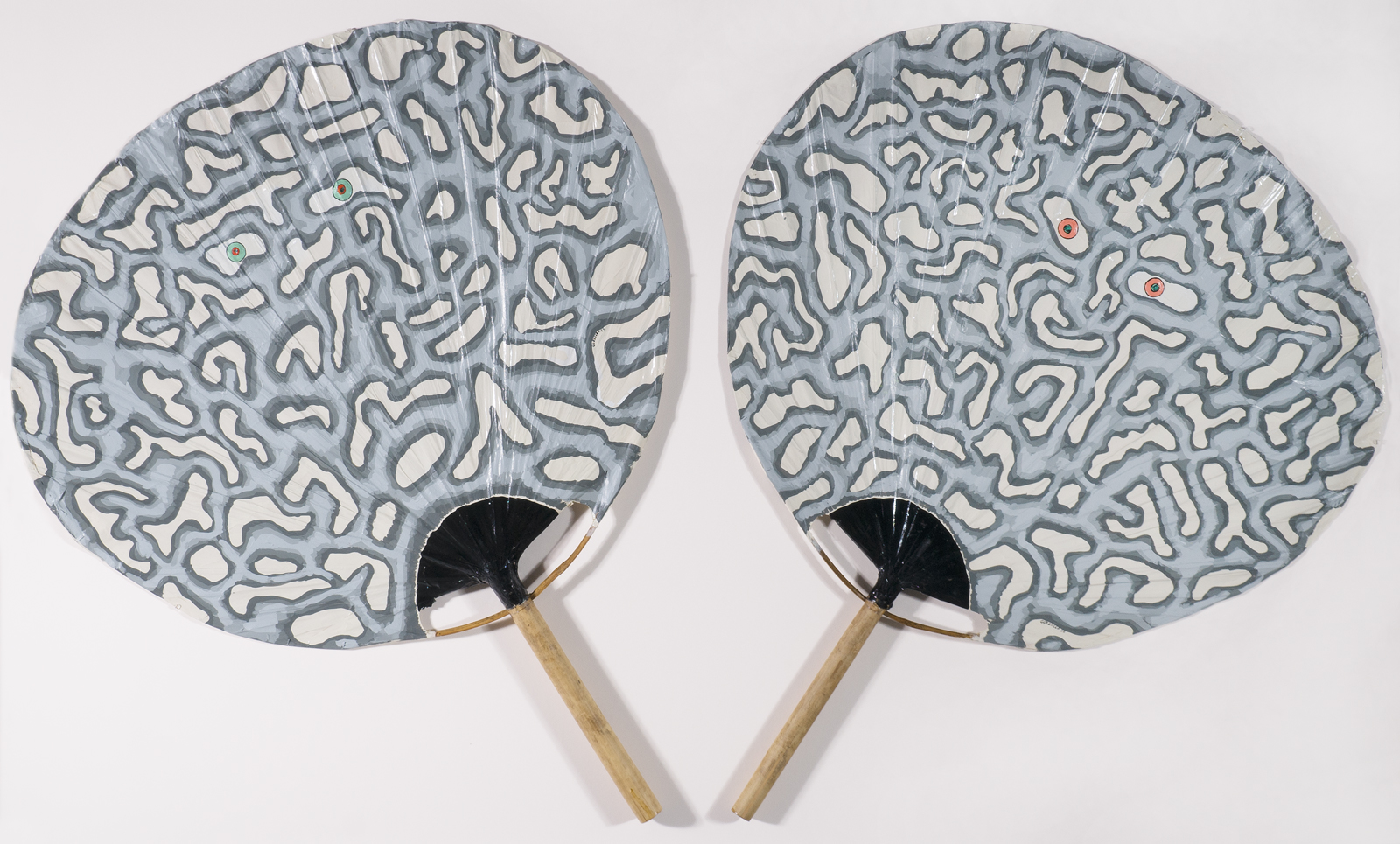Luis Gordillo
(Seville, 1934)
Laberinto de pasiones: el gris de tu mirada
1985
acrylic on two Chinese paipai fans
98 x 80 cm
Inv. no. 5113
BBVA Collection Spain
A beacon for contemporary art in Spain, in the 1980s Luis Gordillo’s practice had already hit its stride in terms of iconography and painting. Patent in his work is an early influence of Surrealism and psychoanalysis (which he underwent in various periods of his life), of the irony of artists such as Francis Picabia (1879-1953), and of . His creative world could not be understood without the inclusion of elements related with mass culture (albeit with highly personal nuances) and biological and technological motifs.
This work, made on two large Chinese fans, was painted for the exhibition “Otros abanicos” (Other Fans) held in Madrid in 1985 at Fundación Banco Exterior de España.
Using these Chinese paipai fans as his support, he rendered a couple of heads, a recurring element in Gordillo’s imagery ever since the early sixties. The spectator can perceive the hypnotic eyes that trap his attention, but at the same time one can also see inside the head, into the brain, with a maze of labyrinthine lines covering the whole surface of the leaf; of both fans. The pattern is reminiscent of his experimental Situaciones meándricas from the eighties, though in this case the lines are much more uniform.
Turing our attention to colour, here Gordillo uses a pared- spectrum based on grey and white to draw the sinuous outline of the “brain-like” forms. One can only appreciate the appearance of bright colour in the unsettling eyes in both fans; one is bright pink with a green pupil while the other is fluorescent green with a red pupil.
This work, made on two large Chinese fans, was painted for the exhibition “Otros abanicos” (Other Fans) held in Madrid in 1985 at Fundación Banco Exterior de España.
Using these Chinese paipai fans as his support, he rendered a couple of heads, a recurring element in Gordillo’s imagery ever since the early sixties. The spectator can perceive the hypnotic eyes that trap his attention, but at the same time one can also see inside the head, into the brain, with a maze of labyrinthine lines covering the whole surface of the leaf; of both fans. The pattern is reminiscent of his experimental Situaciones meándricas from the eighties, though in this case the lines are much more uniform.
Turing our attention to colour, here Gordillo uses a pared- spectrum based on grey and white to draw the sinuous outline of the “brain-like” forms. One can only appreciate the appearance of bright colour in the unsettling eyes in both fans; one is bright pink with a green pupil while the other is fluorescent green with a red pupil.









